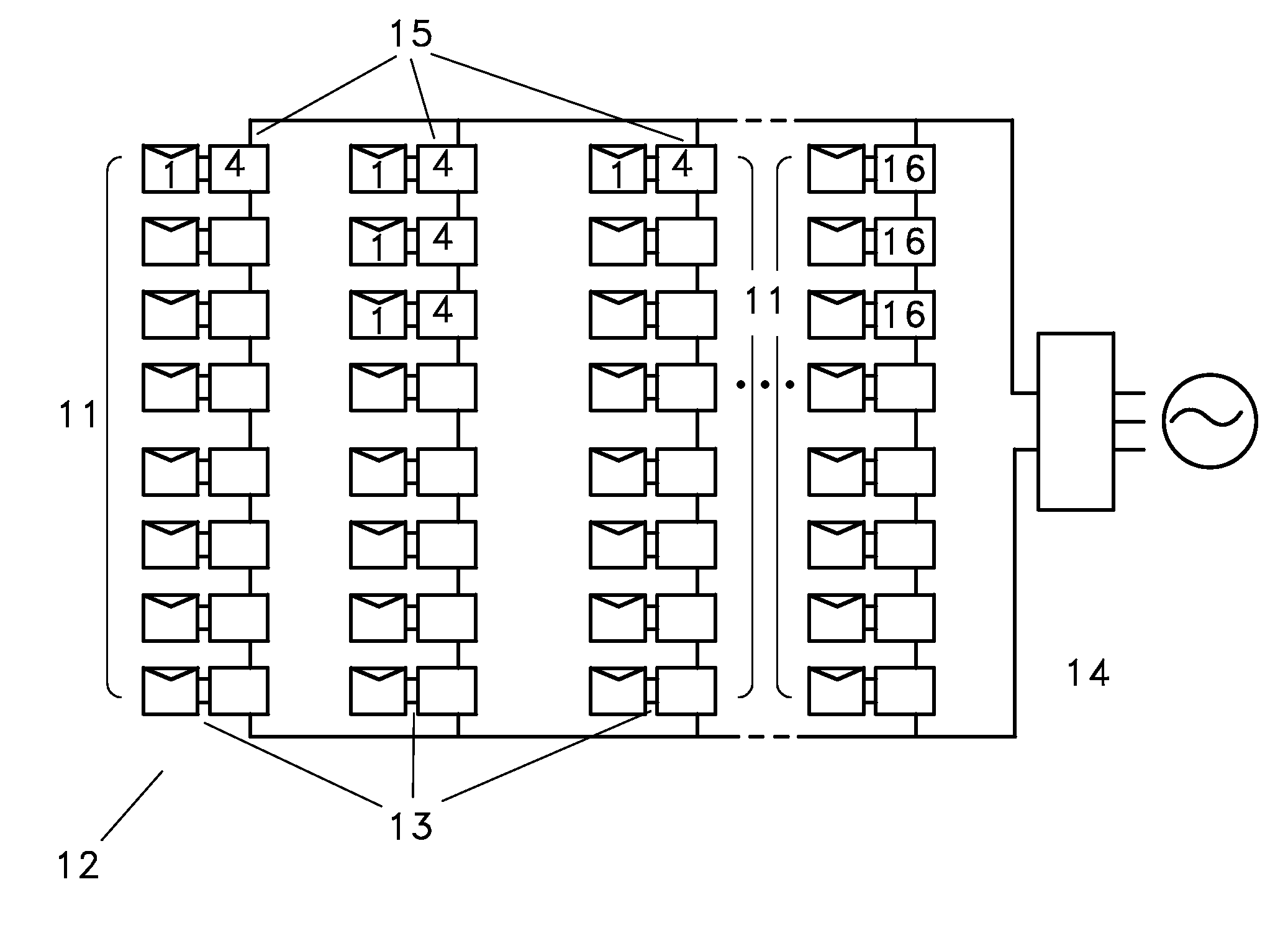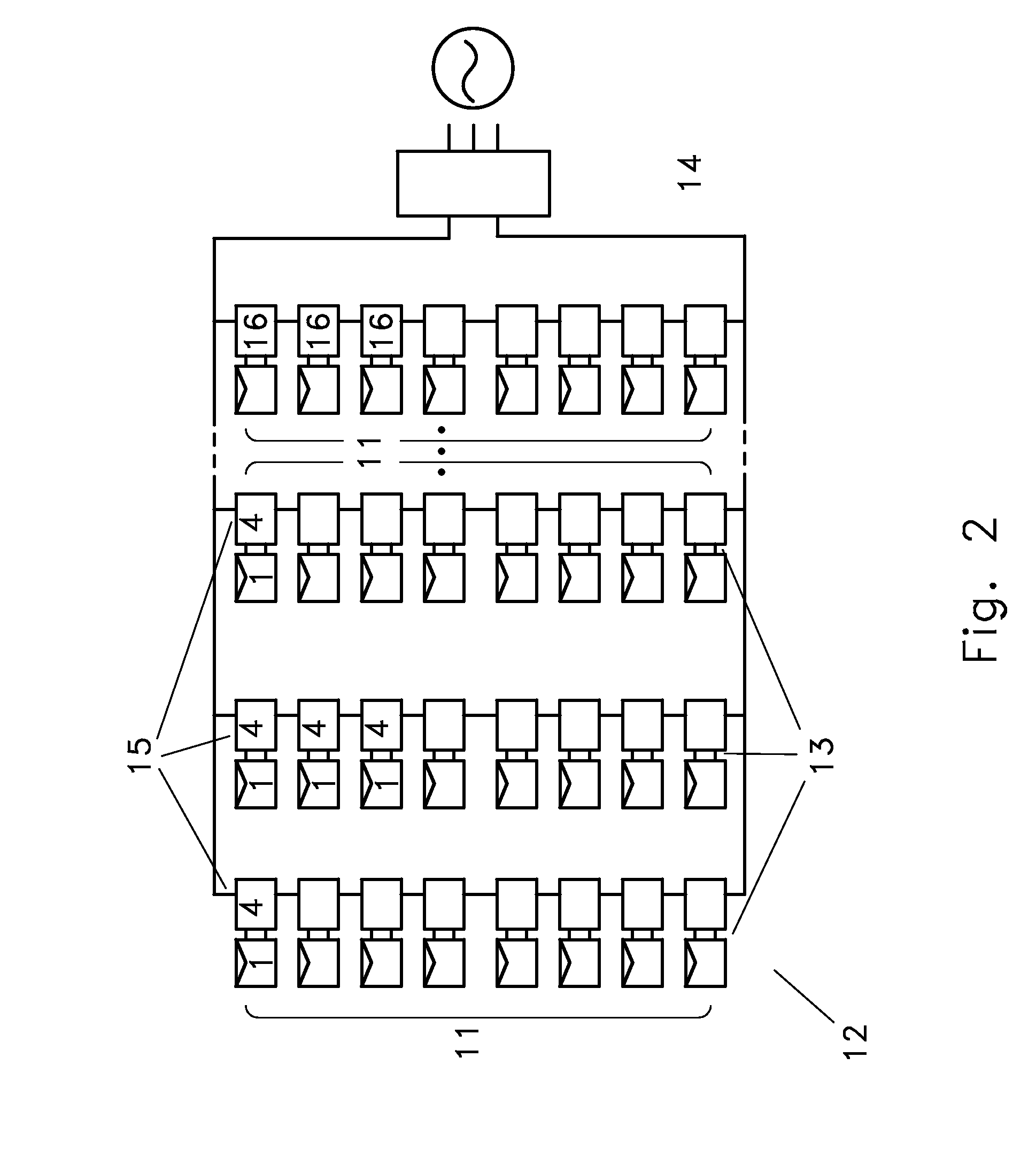Systems for highly efficient solar power conversion
a solar power and conversion system technology, applied in the field of solar power, can solve the problems of greater energy harvesting and better cost, and achieve the effects of high power conversion efficiency, high efficiency dc-dc conversion, and high total energy harvesting from the overall system
- Summary
- Abstract
- Description
- Claims
- Application Information
AI Technical Summary
Benefits of technology
Problems solved by technology
Method used
Image
Examples
Embodiment Construction
[0032]As mentioned above, the invention discloses a variety of aspects that may be considered independently or in combination with others. Initial understanding begins with the fact that one embodiment of a power conditioner according to the present invention may provide an alternative process converter, a dual mode photovoltaic converter, a very high efficiency photovoltaic converter, or a multimodal photovoltaic converter, all perhaps with the inclusion of maximum power point tracking (MPP or MPPT) aspects. Such elements may present alternative process conversion, dual mode photovoltaic conversion, a highly efficient method of solar energy power conversion, etc. Embodiments may include operational boundaries such as for output voltage, output current, and perhaps even, output power. Each of these should be understood from a general sense as well as through embodiments that display initial applications for implementation. Some initial benefits of each of these aspects are discussed...
PUM
 Login to View More
Login to View More Abstract
Description
Claims
Application Information
 Login to View More
Login to View More - R&D
- Intellectual Property
- Life Sciences
- Materials
- Tech Scout
- Unparalleled Data Quality
- Higher Quality Content
- 60% Fewer Hallucinations
Browse by: Latest US Patents, China's latest patents, Technical Efficacy Thesaurus, Application Domain, Technology Topic, Popular Technical Reports.
© 2025 PatSnap. All rights reserved.Legal|Privacy policy|Modern Slavery Act Transparency Statement|Sitemap|About US| Contact US: help@patsnap.com



